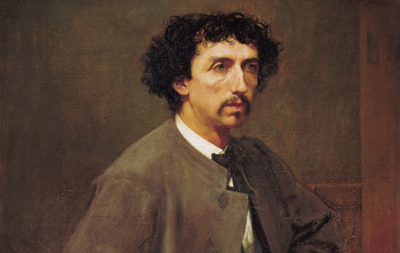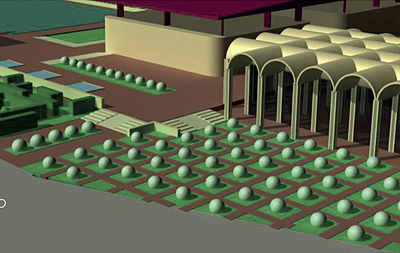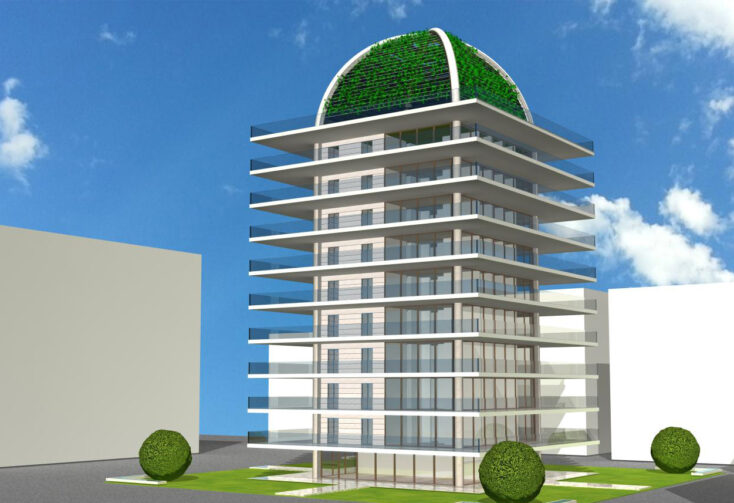1.6
Architecture - Design - Art
Living the building is poetry not the building poetry
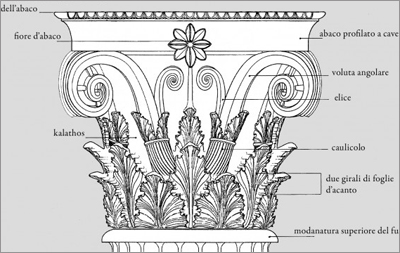
On the relationship between the various arts
(29-08-2019)
Define correctly the relationship between the different arts in the contemporary era is important because it brings us back to an assessment of the building seen like total participation that assumes direct meanings and that are no longer mediated by abstruse theories that for the most of people remain unknown. The modernist deception produced over time because of various historical, artistic, economic and social reasons, has generated a certain confusion among the common people. Confusion from which even academic circles do not seem to be exempt (even if today something better has been done) where different theories hover between the halls of the universities and in conference speeches. Indeed, these ideas are devoid of any real concreteness and their discourses are not supported by such a linear logic as to be able to direct its contents into reality.
They settle on the chair and begin to talk, they talk about designing architectures linked with aleatory definitions that have neither begninning nor end. Concepts that remain in the minds of those who produce them and in the poor bystanders who listen word in confusion, because they don’t have a strong and concrete thought.
I happened to listen university lessons, where it was stated with extreme naturalness and almost to want to emphasize its obviousness, as in making architecture there are no more sufficient what we call the three Viruvian elements, namely: firmitas, utilitas and venustas but that today we must added space and time to these. And so a thought occurs to me spontaneously; why this statement? Why did they want to highlight something that was already present in reality? Let me explain better, how can we be so superficial in thinking that in the past the architects built without considering the factors mentioned above (space and time) or without evaluating many other factors that apparently do not seem to be part of the three Vitruvian elements?
The reason for this statement that is common to many contemporary architects will be better highlighted later, for now we will limit ourselves to explaining in the simplest way possible because space and time were well present also in the architecture of the past. So according their opinion and their bold academic theories, in 1500, for example, or on other dates, people was so primitive that they didn’t understand the limitations of the three Vitruvian elements, elaborating and constructing buildings without the space and contemporary time.
Except that this lack created results that history has left us and of which we still enjoy the benefits today, and therefore time has not exhausted its value, perfectly integrated into the context by occupying the space of which we are a part; so time and space. Yet they seemed to be terms belonging to the contemporary and the contemporary based on these new concepts, what did they create instead? See only a few examples in the photos as a practical demonstration of what is stated, just to refresh the memory.
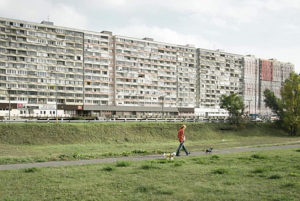
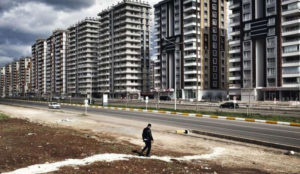
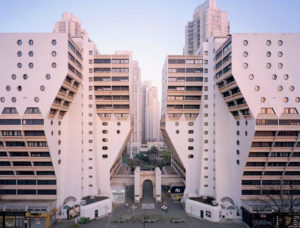
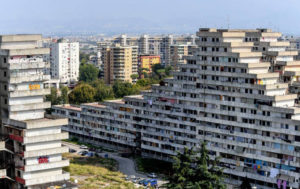
But let’s take a step further, just to understand, analyzing with accuracy, the nuances that the different languages can make us understand, opening us to new discussions. Let us take, for now, the idea that time and space in the current context refer to the poetic aspect of architecture, that is the achievement of an architectural language that expresses a new idea of space and time understood as sublimation of the material that transforms itself into poetry and as such capable of reaching and making us reach unexplored peaks of pleasantness. This, they will say, we meant, was what was missing in the Vitruvian triad of past architecture!
Poetry as life, as pleasure, as the whole, and the poetic aspect is undoubtedly in the architecture itself, inspired by a thousand things around us, and certainly this nobody can deny. A poem that trasforms into walls and bricks. But the walls and bricks are not poetry. The brick is certainly not a poetic element, perhaps it will be the building that will consist of a set of bricks and the finished building itself can be poetry in the everyday life of its role, in its temporal experience and not building = poetry.
I will try to explain myself better. I consider this fundamental and central step, because it clarifies confusion that is being generated between the various arts, such as to lead to a tangle and jumble of confused theories.
This that we want to highlight is a tendency to want to translate the poetic sensation into images without mediation, making way for a concept, a type of culture or a way of reasoning that over the years it has been consolidated so as to make it appear almost like a foregone truth and absolute. A way of thinking that has influenced all the fields of knowledge concerning art and literature.
Basically the absence of mediation refers to the desire to extrapolate the concept and make this the essential element of the work, without considering the elements that sustain the real meaning. It is a method indicated several times also in the classrooms, where it is stated that in a poem, rather than the way in which it is written, the founding element is its meaning and for this it is superfluous to learn it by heart. I took this example to transfer it to architecture to make clear what will be described later.
But let’s go step by step, also because a criticism of this kind involves a vastness of elements certainly interesting.
Affirm that the founding and fundamental elements of architecture are linked to poetic and artistic events, means to say that it develops and borns according the canons of our culture, where a project sees a continuous interweaving of formal and functional elements. The shape can highlight the functional aspect and vice versa. This represents the fulcrum of planning and the final purpose in which to make continually refer from who do this job.
Up to here nobody can question such reasoning. However, in reference to the one mentioned before, in the relationship between function and aesthetics there is a passage that is not considered, namely, as the modernists think, that form is the essential element, where the building that will be built will represent the very symbol of our idea. The idea becomes reality, initially represented as a sketch on a drawing sheet and then built to last over time. The sign that translates poetic abstraction through a simple pencil is, for most moderns, a meta-sign, an extremely schematic sketch that shows us the primitive form, the guiding idea, the poetic spirit. That only one trait so peremptorily defined by the architect should dazzle and reverberate in those who see it in a sort of play of reflections between the form, the person who looks at it and the person who created it.
More precisely, the primary aspect desired by the designer is (or should) immediately perceived by the external observer. Given this condition we note that the design of this object takes her shape precisely from that mental process that we have called meta-sign. The mediation provided by other elements (materials, colors, etc.) should disappear and that sign should represent the main meaning and in fact what the project wants to communicate.
This approach, as explained, is typical of the current trend that pervades also the other arts in many aspects. So a picture or a poem is analyzed and read by extrapolating the message considering it as an essential and indispensable element to define the quality of the work. So that poem becomes relevant because it provides a message, neglecting or putting in second order the structure and composition of the same, namely, the formal aspect that translates the combination of words into music.
– No my dear students, there is no need to learn that poem by heart, is much more important understand its meaning. If even this artist had wanted to give that message based on words inserted in a specific order, dedicating days, months or years, we will avoid talking about it because we are modern and we will study the substance rather than the trappings that stand in it. Musicality, order? Useless frivolities the only final message is important. –
But we find this decisive message also in other artists; and it is the exact same message. Curious that what we consider fundamental and substantial in the work is the same for others. Those poems so different in their ways of expressing themselves, in the combination of words, in the formulation of sentences, however, have similar or even identical messages.
But if the message, that is the essence of the work, is the same for many artists, how can we say that it makes that the difference? And in the architectural field, how can that circle be like other circles, which represent the meta-design sign, the essential imprint of the architect artist, if this composition is identical to others?
I have drawn a square, but there are a thousand squares, as well as a thousand circles and rectangles. Objects that are the same but different in theory, and so what is that expresses the difference if we do not find it in the meta-sign as theorized by the modernists?
If it is not in the general form, all that remains is to find it in the particularities of its construction. As in poetry (which students should learn by heart to better appreciate it), even in architecture, the details will make the difference.
The sign now, i say and I affirm to be a negligible aspect, at least compared to the importance that was previously attributed to it, because from the same sign i can obtain different results. And what, we can say, about the initial assumption? At this point, those references to space and time expressed in the meta-sign engraved by the architect have a completely different meaning, because it is the “particular” that takes the role of guide.
Today this seems strange, but not in the past, where the knowledge of all the elements that made up an architectural structure were perfectly known. It will be fundamental to resume a study on materials, rather than on their shape, styles, colors, way of composing them, proportions and modules, in this way we can unhinge the previously described mental process that has generated and still generates only confusion. A confusion that reverberates around us, because that idea is suffered by the people that live the built and that are often rejected by accentuating that separation between theory and practice, between reality and dream.
And this explains why architecture is not poetry, because the tools (ie the details) with which it is made are not the same as those used for poetry but living in the harmony of its forms, that one is poetic. The modernist whom I will call the “Modarnisti” (the modern fashionist or with a english neologism “Fashionrnist“) with a neologism, to indicate the poetics of a building would do it in the form of letters of the alphabet, to search of an absence of mediation which for the most time has products unfortunately troubleshooting that are difficult to remedy.
© Arch. Alessandro Plini
